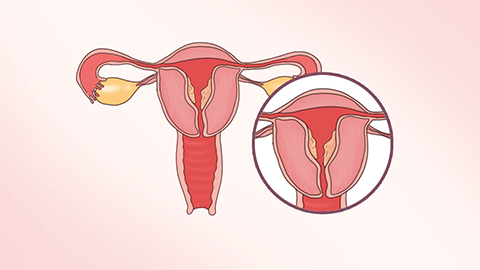What causes uterine contractions?
Normally, uterine contractions may be caused by factors such as normal physiological responses during menstruation, postpartum uterine involution, endometritis, adenomyosis, or fluid accumulation in the uterine cavity. It is recommended to seek timely medical consultation to determine the exact cause and receive appropriate treatment under a doctor's guidance. Detailed analysis is as follows:

1. Normal physiological response during menstruation: During the menstrual period, the endometrium sheds and the uterus contracts to facilitate the discharge of menstrual blood, which manifests as intermittent lower abdominal pain. This is considered a normal physiological phenomenon. Adequate rest should be ensured, strenuous exercise avoided, and applying heat to the lower abdomen may help relieve discomfort. Maintaining good menstrual hygiene is also important.
2. Postpartum uterine involution: After delivery, the uterus contracts to return to its pre-pregnancy size. During this process, sensations of distension or pain in the lower abdomen may occur, but these symptoms usually gradually subside over time. Breastfeeding can promote uterine contraction. Additionally, medications such as oxytocin injection or Motherwort granules may be used under a doctor's guidance to aid uterine recovery. Avoid excessive fatigue and ensure sufficient rest.
3. Endometritis: Bacterial infection causes inflammation of the endometrium, which stimulates frequent uterine contractions, accompanied by lower abdominal pain, increased vaginal discharge with an unpleasant odor, and fever. Patients may follow medical advice to take anti-infective medications such as Cefixime capsules, Metronidazole tablets, or Azithromycin dispersible tablets. Sexual activity should be avoided during treatment, and personal hygiene should be maintained. Uterine contractions will usually ease once the inflammation subsides.
4. Adenomyosis: Ectopic endometrial tissue bleeds during menstruation, stimulating strong uterine contractions and causing severe dysmenorrhea. Intermittent contraction pain may also occur outside the menstrual period. Patients may take medications such as ibuprofen sustained-release capsules, dydrogesterone tablets, or norethisterone tablets as directed by a doctor to alleviate pain and contractions. In severe cases, surgical removal of the lesion may be necessary to excise the ectopic tissue and relieve uterine contraction symptoms.
5. Fluid accumulation in the uterine cavity: Fluid retention in the uterine cavity stimulates uterine contractions to expel the accumulated fluid, often accompanied by lower abdominal distension and back pain. Small amounts of fluid may be naturally absorbed through uterine contractions. Patients may take medications such as Xinhua granules or Cinnamon Twig and Poria Capsules as advised by a doctor to promote fluid drainage. When fluid accumulation is significant, a uterine cavity drainage procedure may be required to remove the fluid via a catheter, reducing irritation and relieving uterine contractions.
In daily life, maintaining a regular sleep schedule, avoiding late nights and mental stress, and paying attention to hygiene during menstruation and sexual activity are important. If uterine contractions are frequent or accompanied by severe pain, record the timing and triggers of the episodes to assist doctors in identifying the cause and providing targeted management, thus maintaining uterine health.





